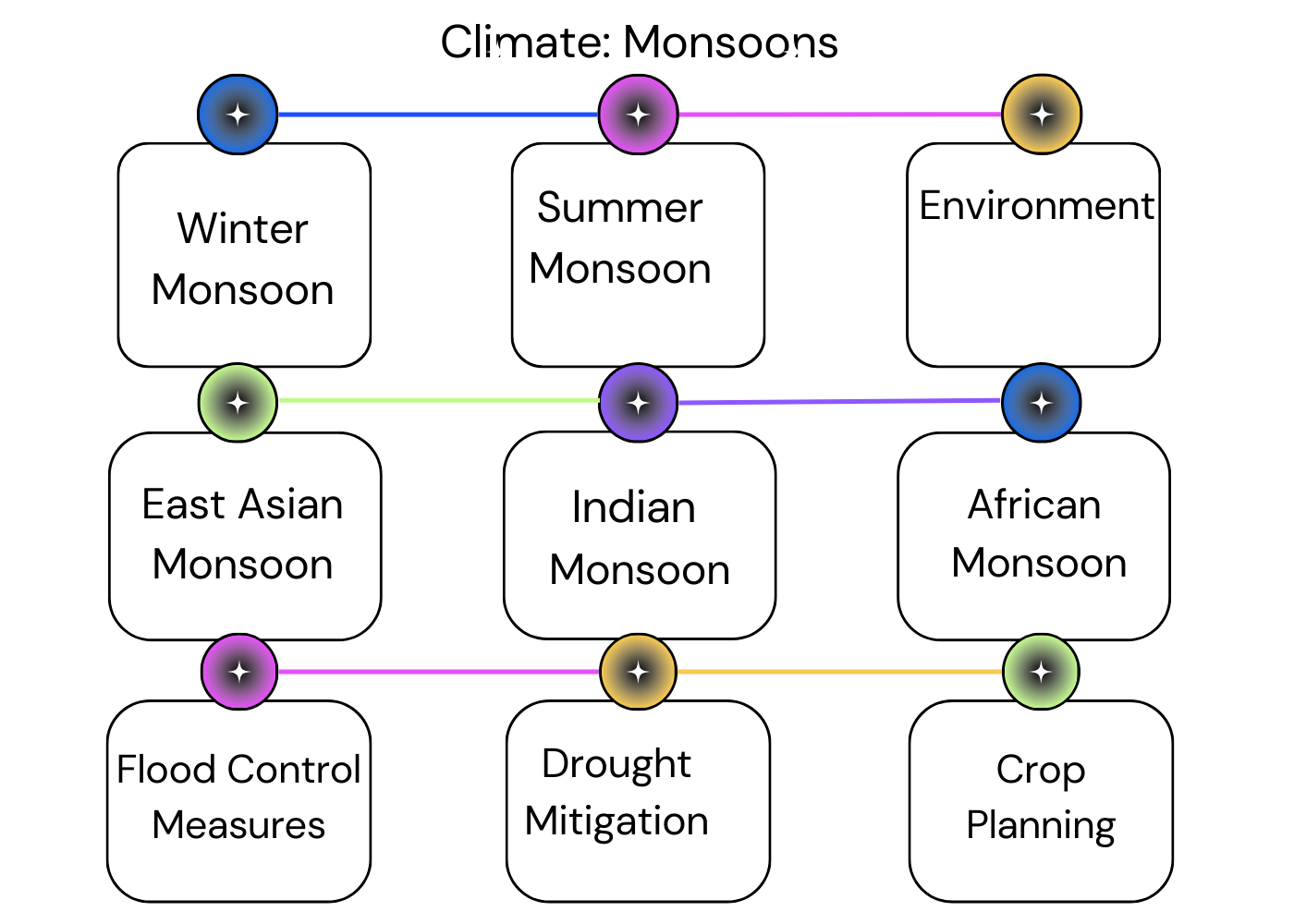Gist
What are monsoons?
• Seasonal wind shifts: Monsoons are large-scale systems
that cause a dramatic reversal in wind direction, most often
associated with changes in precipitation.
• Driven by uneven heating: Land and ocean areas heat up
and cool down at different rates. This creates pressure
differences, leading to winds blowing from high pressure towards
low pressure zones.
• Wet and dry seasons: The "summer monsoon" brings
substantial rainfall to many regions, while the "winter monsoon"
is typically associated with drier weather.
Geographical Significance
• Monsoonal regions: Areas most dramatically impacted by
monsoons include the Indian subcontinent, Southeast Asia, parts of
Africa, and northern Australia.
• Agriculture: Monsoon rains are critical for agriculture
in these regions, providing water for crops. Variability in
monsoon timing or intensity can have major impacts on food
production and livelihoods.
• Lifeline: Monsoons are essential for replenishing water
supplies in many areas, playing a crucial role in the regional
water cycle.
Ecological Impacts
• Vegetation: Many ecosystems depend on the monsoons for
survival. The timing and amount of rainfall are key to plant
growth and productivity.
• Biodiversity: Monsoons have shaped the unique
biodiversity of regions like India’s rainforests or East Africa’s
savannas. Species have adaptations timed to the seasonal wet and
dry cycles.
• Wildlife patterns: Animal life cycles, such as migration
and breeding, often coincide with the seasonal shifts brought by
the monsoons.
Challenges
• Climate change: Climate change is disrupting monsoon
patterns, with potential for more extreme rainfall events
(flooding) in some areas and increased droughts in others.
• Uncertainty: Climate variability makes it difficult for
farmers and resource managers to plan for the monsoon season,
affecting food security and water management.
• Overall, the monsoons shape the geography and ecology of many
regions. Understanding their patterns and the impact of climate
change on them is crucial for sustainable resource management,
agriculture, and ecosystem protection.
• let me know if you'd like more information on a specific region
or aspect of monsoons!
